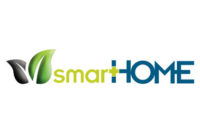
The economy has dealt some tough blows to residential integrators, and sadly, some companies have not been able to withstand the downturn. However, there are some companies that have not only managed to survive, but are increasing revenues and profits. What is it about these companies that gives them an edge?
According to a recent ranking of companies in the audio/video industry, while only 14 companies increased their sales revenue in 2009, 11 of those 14 companies also offered security services. Audio/video installers and home automation specialists that also offer security products and services, as well as security companies that have added audio/video, home control, and other offerings, are proving to be more resilient than more narrowly focused companies.
More and more, customers are looking for a single contractor to meet all of their needs. Michael Pope, owner of Safety Technologies, the security division of Audio Video Interiors in Medina, Ohio, says, “Clients are so time-starved. If they can meet with one contractor they can trust, that’s a big benefit to the client.” Indeed, most integrators report that client demand is the driving force behind the move to diversify.
“Customers are looking for simplification. It’s also easier for us,” says Craig Abplanalp, vice president of Definitive Audio, located in Bellevue, Wash. The company’s primary focus is audio/video, but it has recently added some security services. “When you have multiple contractors, there’s more of a chance for something to go awry. We like having better control over that space from soup to nuts,” says Abplanalp. He says that although security is not a primary revenue source for Definitive Audio, the addition of security has removed a barrier to sales in which the homeowner is looking for a single provider.
David Rogers, founder and chief executive officer of Dallas Sight and Sound located in Addison, Texas, agrees, “Clients want us to do everything.” And, he has discovered that the move into security has paid off in terms of quality and customer satisfaction, “When we have more under our scope, it’s a better system.”
Offering services on the both the security and home integration sides provides an opportunity for the contractor to introduce customers to products and services that they may not have been aware of, allowing the provider to substantially increase the value of each contract. Tom Callahan owns Sawyers Control Systems Inc., located in Frenchtown, N.J. In 2009, his company posted a 15 percent increase in gross revenues and profit over 2008. This year, he anticipates a 10 percent increase over last. He feels fortunate that, even in this challenging economic environment, they have been able to continue to grow and to retain all of their employees. In part, he attributes the success to the diverse offerings Sawyers provides its customers, which have given them a distinct advantage over more narrowly focused competitors.
Callahan says that being able to meet all of his clients’ security and low voltage needs keeps the competition out and allows him to make the most out of every contract. He says, “The total sale can increase tenfold over the alarm system alone.”
The benefits of developing clients’ trust over time can manifest in other areas as well. “Part of our business model is maintaining service. The customer is happy, and we get referrals,” says Callahan. Because he can rely on referrals, Callahan says he doesn’t have to do much marketing.
Tommy Vordenbaum, president of Integrated Systems Inc. in Opelika, Ala., follows the same approach. “I haven’t found any type of advertising that was worth it,” he says. Referrals and returning customers make up most of his sales. “The customer always calls us back to do more. Ninety percent of our customers have additional electrical needs,” says Vordenbaum.
Converging technologies make the combination of security and integration a natural fit. “The lines are being blurred now,” says Bill Graham, senior vice president of sales and marketing of Warrendale, Pa.–based Guardian Protection Services. “You’ve always had integration with AV and home automation. Now with security [providers], they’re getting HVAC and lighting control. The technologies are now intersecting. It’s a good opportunity for the right provider.”
Beyond the convenience of having one provider planning the project or a single company to contact for service, homeowners are also looking for more streamlined access to their home systems. A single contractor can easily link all home control, entertainment, and security systems to a single panel. Homeowners appreciate having access to all of their systems from a single interface whether it be a smart phone or a wall-mounted touch panel. In addition to the convenience, there is the cosmetic appeal of reducing “wall acne” by minimizing the number of control panels in the home, says Pope.
As people grow accustomed to using smart phones and other devices, they are coming to expect the ability to control everything at their fingertips. “Security in the past was just security. Nobody wanted it, but they needed it,” says Graham. These days he sees security systems bridging the gap between home security and an interface to the home. He notes, “Consumers want to be connected to their homes. Now the security company becomes the provider. We’ve become a much bigger part of day-to-day life.”
Distributors are responding to market demands as well. Cynthia Menna, senior manager of Business Development for AVAD, Van Nuys, Calif., describes the convergence in the industry. She says the trend is no longer emerging, but converging technologies, “There’s a lot of synergy in technology that dealers must know about.”
Historically a distributor to audio/video providers, AVAD has recently added home automation and security products, services and training. Menna adds that the response from the dealers to the new security offerings has been very positive, “With the economy tightening, the idea of other modes of recurring revenue is appealing.”
Challenges
The recurring revenue stream from security monitoring can be a nice complement to the initial sales for an established audio/video or home automation company; the varied revenue sources can provide some relief in a difficult market. However, working in multiple areas poses many challenges as well.
Among the biggest is doing everything well. Staff needs to be trained and to keep up to date on more products, practices, and regulations. “It’s not easy keeping all technicians up to speed,” says Callahan. Cross-training staff is important, especially from the perspective of customer service. For example, when a customer calls with an A/V problem, once the technician arrives at the home, the client may ask him to look into a security or control issue as well.
Though keeping up with training can be expensive in terms of both time and money, Abplanalp says it’s well worth the investment. In addition to attending seminars off-site, his staff receives one to two hours of ongoing training per week in house. “It’s just a matter of discipline and consistency,” he says. “It’s far more expensive sending them out into the field untrained.”
Abplanalp adds that it is important to know your strengths and limitations. His company’s background is in audio/video; security is a relatively new offering. While he knows that his staff can meet the needs of many customers, he does not hesitate to call in an experienced security specialist for more extensive projects.
Cost is another obstacle. Training, staffing, and licensing require significant upfront investments; returns may be modest and occur well down the road. Graham says, “Make sure you have the capital and wherewithal to support your plan. Your return on investment comes many months down the road — if everything goes as planned.”
Companies considering the move are advised to proceed cautiously. Pope advises them to be well-prepared before making the jump. “It’s a tough thing to do and the customer usually pays the price for the learning curve. It’s not worth the bad marks on your reputation,” say Pope.
Obtaining the appropriate licensing and insurance is as essential as acquiring knowledge and training in the field. In the sensitive area of security, there is no substitute for actual experience. Pope suggests that integrators partner with a good company that shares similar business philosophy and standards. This can be beneficial to both companies in the short term as they work together offering complementary services, and referrals, while learning about each other’s areas of expertise.
Hiring a specialist in the new area is another strategy used by successful companies. New staff members bring knowledge and experience to the company and can play a key role in training technicians and developing the new division of the company.
The Bottom Line
Diligence, careful preparation and sound business practices are critical when venturing into a new area. While the path to diversification may not be an easy one, it may be necessary to ensure long-term viability. However, adding to a company’s strengths can secure a solid market presence and create a loyal customer base to carry through the tough times.
Vordenbaum’s Integrated Systems Inc. began as a security company and added distributed audio, lighting control, networking, and other services over the years. He credits this diversification, with a solid foundation in security, for his company’s survival and success over the years. “If we didn’t have all of these offerings, it would be difficult to make it.”
Making the Jump
Expanding into new specialties can be a challenge. Successful companies proceed carefully and deliberately in the transition to avoid costly mistakes.
Focus on fundamentals. Creating a sound business plan and building sufficient capital are essential before making the move.
Learn the basics. Learn as much as possible about the target field. Get to know the products and technologies, seek training in regulation and licensing requirements, and research liability and insurance concerns.
Network. Get involved in the new industry. Attend trade shows and conferences. Seek out the advice of experienced colleagues in the target areas.
Hire expert staff. Knowledge and training in the new areas are essential, but not sufficient to make up for hands-on experience in the field. To bridge the experience gap, consider hiring an expert in the field to develop the new division in the company, train existing staff, and ensure quality work from the beginning, so that customers do not have to pay for mistakes made early in the new venture.
Work with a partner. Many successful companies started by partnering with a company that offers complementary services and shares the same business philosophy. A good partnership can be mutually beneficial for exchanging knowledge, gaining experience and obtaining referrals.
Merge with another company. Some partnerships become permanent. Many successful integrators have entered a new field by bringing in the staff, resources and clients of companies that are already established in the field. Mergers may occur through a mutual decision to strengthen both partners.
Standardize procedures. To ensure stability during the transition and in the future, maintaining the good business practices of the past is key. David Rogers, of Dallas Sight and Sound, recommends formalizing and standardizing procedures to ensure that quality and consistency carry over to the new division.





